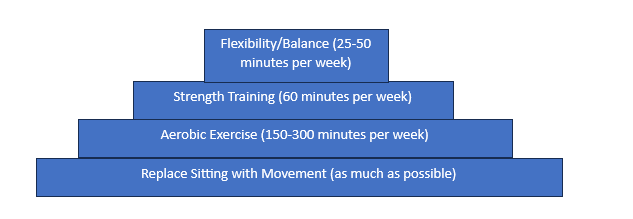“A feeble body weakens the mind,” wrote French philosopher Jean-Jacques Rousseau. He was not alone in expressing the observation, repeated down through the ages, that our intellectual acuity is linked to our physical health. Yet somehow our society has ended up in a place where we compartmentalize those who take care of their bodies (labeling them mindless jocks) and those who nurture their minds (stereotyping them as frail geeks). In the years since Rousseau lived, science has consistently come down on his side: There is clearly a connection between exercise and brain health with health of the mind linked to health of the body.
The mind-body connection
In the philosophical tradition in which Rousseau was writing, physical fitness was generally viewed as the outward manifestation of the rigor and self-discipline required to be a clear thinker. While there may be something to that point of view, modern medical research makes a less abstract and more direct physical connection that can be boiled down to a simple aphorism: What’s good for your heart is good for your brain. Through physical exercise, we can limit and even reverse cardiovascular damage that’s directly implicated in cognitive decline. In one recent study, women who were especially physically fit during middle age were diagnosed with dementia almost a decade later than those of average fitness. But you don’t need to run marathons in order to reap the cognitive benefits of exercise. Numerous other studies have shown that even moderate physical activity is neuroprotective.
Exercise is beneficial for cognition in one other, somewhat roundabout way: Physical activity keeps us from becoming frail, which is a widely recognized risk factor for dementia. Frailty and the risk (or reality) of damaging falls makes us less likely to exercise, to engage socially, and to keep up a positive outlook, all of which are protective against cognitive decline.
What kind of exercise?
If you’re looking to boost your cognition through exercise and are wondering where to start, the most basic answer is, “Anywhere.” Just beginning to move instead of spending your days seated will make a huge difference in how you feel, and has been shown to significantly improve health outcomes. Yard work, a leisurely stroll, taking stairs instead of an elevator, parking at the back of the lot so you have to walk farther to get into the store—anything that replaces motionlessness with movement is going to help. Once it feels good to move your body again, you can take things to the next level.
Aerobic
Aerobic exercise, known these days as “cardio,” should be the foundation of your exercise program. When you do this kind of exercise, you should feel your heart rate increase and your breathing get harder. But there’s no need to overdo it. Your goal should be to achieve a moderate level of intensity, which you can recognize as being a pace at which you can talk but not sing. Strive to stay in that zone for 150-300 minutes per week (That works out to five 30-60-minute workouts, but you may break the overall number up into any size of chunks you like). There’s nearly an endless number of ways to get your aerobic exercise in. The key is to find something you enjoy so that you’ll stick with it. Some people are content to hammer out their workouts on a treadmill, while others would go crazy after just a few minutes. Walking, tennis, swimming, cycling, hiking, pickleball, vigorous housework, dancing, skiing, badminton—there’s no “bad” form of exercise except the one you won’t do because you hate it.
Strength
While aerobic movement has been shown to be the most effective form of exercise for reducing dementia risk, strength or “resistance” training is also linked to lowered risk of Alzheimer’s and to improvements in memory, working memory and executive function. In strength training, the purpose is not to get your heart beating faster but to pump your muscles and strengthen your bones by moving weight. Add in at least two 30-minute strength-training sessions per week to preserve muscle mass and bone density. You can do this by lifting free weights, using machines in a gym, investing in a set of resistance bands, or using your own body weight as an exercise tool. Target all of your major muscle groups. Before you start, be sure to learn proper form to avoid injury.
Flexibility and balance
When we’re young, balance and flexibility are taken for granted, often viewed as character traits, with some people possessing good balance or flexibility and others not so much. But even those who were gifted with such traits when they were younger are likely to see those attributes diminish with age. That’s why it’s important to dedicate at least a few minutes per workout to simple exercises that can help you maintain the flexibility and balance you need to prevent injuries and falls. This can be as simple as standing on one foot, walking a painted line, skipping rope or doing seated stretching exercises. Some broad forms of exercise, such as tai chi and yoga, are excellent ways of improving and maintaining both balance and flexibility.
Putting it together
You can think of your ideal exercise plan as a pyramid. At its base is the simple imperative to move more. Just above it is aerobic exercise, followed by strength training and then flexibility/balance.

If that seems overwhelming, don’t abandon the idea of exercising altogether. Remember that any movement is better than no movement, and that the above pyramid represents a goal to work toward, not an all-or-nothing recipe that you must adopt wholesale tomorrow. And of course, if you have serious health issues, talk with your doctor before beginning any kind of exercise program.
Think holistically
Its clear that exercise a crucial component of protecting your brain health, but it’s certainly not the only one. Eating well, sleeping enough, socializing, reducing stress and challenging your brain are also enormously important. Researchers in Chicago recently found that, while just adopting one positive lifestyle change can help preserve cognition, people who adopted four or five such changes lowered their dementia risk by a whopping 60%.
For many people, physical exercise turns out to be a keystone that supports those other lifestyle changes. For example, people who exercise more tend to have less trouble falling asleep and staying asleep. Exercise is a great form of stress release, and many physical activities are conducive to social interaction. Sports and recreation can also challenge your brain. In a recent study, when participants took a four-month dance class, they outperformed their peers on tests of working memory, likely because dancing had simultaneously exercised both their brains and their bodies.
Fortunately, thanks to a quirk of human psychology, most people find that once they start exercising regularly, it’s easier to make other positive changes, including healthy eating. Take advantage of those good feelings that come from exercise, and leverage them to develop better habits overall.
Learn more scientifically proven ways of boosting your memory, focus, and concentration by ordering your own copy of Bottomline Personal’s: Better Concentration.


